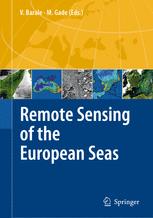

Most ebook files are in PDF format, so you can easily read them using various software such as Foxit Reader or directly on the Google Chrome browser.
Some ebook files are released by publishers in other formats such as .awz, .mobi, .epub, .fb2, etc. You may need to install specific software to read these formats on mobile/PC, such as Calibre.
Please read the tutorial at this link: https://ebookbell.com/faq
We offer FREE conversion to the popular formats you request; however, this may take some time. Therefore, right after payment, please email us, and we will try to provide the service as quickly as possible.
For some exceptional file formats or broken links (if any), please refrain from opening any disputes. Instead, email us first, and we will try to assist within a maximum of 6 hours.
EbookBell Team

4.3
98 reviewsThe enclosed and marginal seas surrounding the European continent exhibit a wide spectrum of environmental traits, ranging from sub-polar to sub-tropical climates, from shallow continental shelves to deep oceanic basins, from pristine marine reserves to regions impacted by countless economic and recreational activities. Understanding the inner workings of these seas – aiming to reconcile the conflicting needs of protecting their ecological balance and exploiting their natural resources – requires adequate observation systems, integrating both in situ and remote sensing techniques. This volume reviews the current potential of Earth Observations, while devoting particular attention to applications dealing with the issues, peculiarities and special challenges posed by the European Seas. The assessment of surface parameters by means of passive techniques – which measure reflected visible and near-infrared sunlight, or surface emissions in the thermal infrared or microwave spectral regions – is addressed. Active techniques – which use transmitted impulses of visible or microwave radiation, for a subsequent evaluation of the signal returned by the water surface – are covered as well. An in-depth analysis of the specific merits and drawbacks of each spectral region, and of both passive and active techniques, provides clues to help compose the unique mosaic of dynamical and bio-geo-chemical features of the European Seas.
Audience:
Scientists and researchers working in the field of Earth and Marine Science. Lecturers and tutors, as well as (graduate) students, in the same field. Academic Libraries.